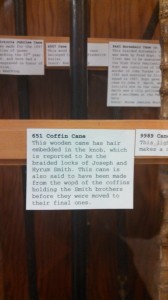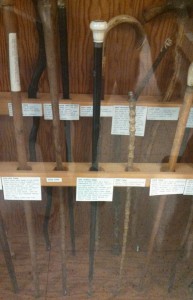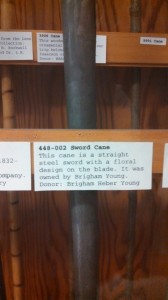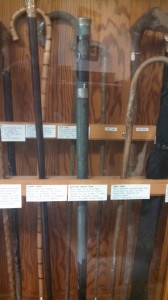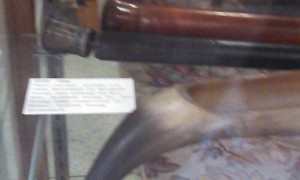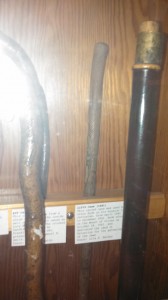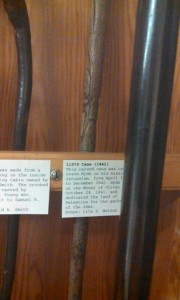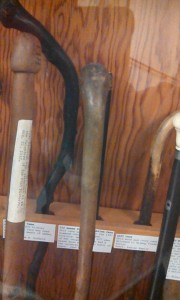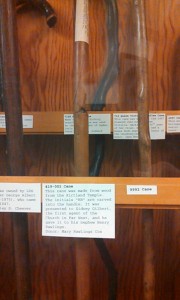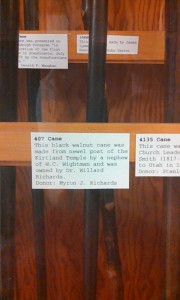[Updated with specific language for the different years from the 1930’s forward in response to Joseph Bishop MTC sex scandal – 3/27/2018]
1830-1840 – Biography of Edward Partridge shows no evidence of temple interviews whatsoever. A recommend is set up by revelation to go to the land of zion, but it is a financial qualification recommend, on 12 November, 1831
1830 – In 1830, on average, Americans consumed 1.7 bottles of hard liquor per week, three times the amount consumed in 2010.
1846 – Maine becomes first state to have statewide prohibition
29 May, 1832 – A recommend is required to go up to Zion. This recommend is barely spiritual, but far more financial in nature.
The saints will remember that the bishop in the land of Zion will not receive any, as wise stewards, without they bring a recommend from the bishop in Ohio, or from three elders. The elders, therefore, will be careful not to recommend and send up churches to this place without first receiving information from the bishop in Ohio, or in the land of Zion, that they can be accommodated when they arrive so as to be settled without confusion, which would produce pestilence.
1854 – Joseph F. Smith was sent on a mission to avoid legal issues as he had beat up the schoolmaster and likely took up drink and tobacco. There was no interview with a bishop, and he would not have passed if there had been one.
1856-1857 – “During the reformation (LDS) of 1856-1857, bishops and teachers saw to the catechizations interviews, and rebaptism of members.” Everyone is asked to “recommit” to the church. This is the beginning of the “worthiness interview” as we know it.
Some of the early questions were: Have you Murdered anyone in Cold-Blood? Have you knowingly branded another persons cattle or livestock? Have you plowed or harvested grain from a field that was not your own? Do you, and your family, wash or bathe as regularly as you are able?
1856 – Temple recommend questions. The First Presidency sent a letter stating that those recommended by local leaders should:
be those who pray, who pay their tithing from year to year; who live the lives of saints from day to day; setting good examples before their neighbors. Men and women, boys and girls over 16 years of age who are living the lives of saints, believer in the plurality [plural marriage], and do not speak evil of the authorities of the Church, and possess true integrity towards their friends (Spring 1998. History of LDS Temple Admission Standards. The Journal of Mormon History. 135-175).
There was no temple in Utah yet, so the questions were simply asked by home teachers as part of the reformation.
1857 – First list of questions drafted and used to qualify whether an individual could enter the Endowment House.
1879 – Image of a recommend from this time period featured prominently on this blog.
1883 – School of prophets decried masturbation (self pollution) as a poor substitute for polygamy (1981. Salt Lake City School of the Prophets Minute Book, 1883. Palm Desert: ULC Press, 54).
1886 – The First Presidency instructed, among other things, that it is “inconsistent to carry the smell of whiskey and tobacco into the sacred precincts of the Lord’s House” (Spring 1998. History of LDS Temple Admission Standards. The Journal of Mormon History. 135-175).
Tithing was made a requirement for a temple recommend at about the same time, if not in the same letter.
1889 – Anson Bowen Call got all the way to the temple engaged to a second wife, without having instruction from a bishop. No interviews are mentioned, or his third and fourth wives after the manifesto would surely have come up.
5 May, 1898 – The First Presidency and Twelve discussed the Word of Wisdom. One member read, from the twelfth volume of the Journal of Discourses, a statement by Brigham Young that seemed to support the notion that the Word of Wisdom was a commandment of God. Lorenzo Snow, then President of the Council of the Twelve agreed, saying that he believed the Word of Wisdom was a commandment and that it should be carried out to the letter. There was no definite action except to prohibit eating too much meat. http://www.dialoguejournal.com/wp-content/uploads/sbi/articles/Dialogue_V14N03_80.pdf
1899 – Lorenzo Snow went on a tithing raising tour throughout southern Utah. Tithing was reemphasized for temple attendance (St. George temple, Logan Temple, and Salt Lake temple were the only ones in operation at this time).
11 May, 1900 – Interview for second anointing text:
Now with regard to your full blessings[,] you will have to see Bro. [Anthony W.] Ivins [president of the Colonia Juarez Stake] and get your recommends to the blessings of the House of the Lord for your full blessings. They will have to be endorsed by Pres[iden]t [Lorenzo] Snow, which I shall be pleased to get for you[,] and that will all be O.K. for you all to get your blessings. Anything I can do for you at any time I shall be happy to do. — George Teasdale to Joseph C. Bently, May 11, 1900 in Joseph T. Bentley, Life and Letters of Joseph C. Bentley: A Biography (Provo: By the Author, 1977), 108.
June 1902 – William Clayton writes:
[T]he practice of masturbation was indulged in by many young people in the church schools. Pres. Smith remarked that this was a most damnable and pernicious practice, and the face of every apostle, president of a stake, and high councillor [sic] should be set as flint against it. The priesthood should be called together at the stake conferences and the brethren and parents should be instructed and warned in relation to this matter.” (Larson, S. A Ministry of Meetings: The Apostolic Diaries of Rudger Clawson, p. 411.)
See also the counsel of Reed Smoot at a similar meeting on pg. 414, where it was called a “secret vice.” The Word of Wisdom was added to the official temple requirements at this point. The First Presidency and Twelve agreed not to fellowship anyone who operated or frequented saloons. Old men were given a pass, and drunkards would be disfellowshipped.
mid-1905 – Members of the Twelve were actively using Stake Conference
visits to promote adherence to the Word of Wisdom.
President Joseph F. Smith instructs that sealings for the dead cannot be performed except for those who were married in life. Also, ordinances for the dead are not to be performed for those who committed murder, suicide, or were excommunicates except by permission of the temple president. (See “LDS Temple Worship” by Anderson)
July 5, 1906 – the First Presidency and Twelve substituted water for wine in the sacrament in their temple meetings, apparently beginning July 5, 1906 (Dialogue, vol. 14, no. 3, Autumn, 1981, p. 79)
May 26, 1908 – North Carolina enacts statewide prohibition, first southern state to do so
5 January, 1908 – Richard W. Young, president of the Ensign Stake, and Joseph F. Smith both endorsed Prohibition (Edward H. Anderson, “Events and Comments,” Improvement Era, January, 1908, pp.234-36; Lund Journal, January 3, 1908; Grant Diary, January 5, 1908).
28 December, 1915 – President Smith said in a letter that young “or middle-aged men
who have had experience in the Church should not be ordained to the Priesthood nor recommended to the privileges of the House of the Lord unless they
will abstain from the use of tobacco and intoxicating drinks.”
1917 – Utah had outlawed alcohol, and tobacco became the focus of the Word of Wisdom (Joseph F. Smith to C. Elmo Cluff, December 28, 1915, Joseph F. Smith Letterbooks, ChurchArchives; Improvement Era, March 16, 1916, p. 461; ibid., April, 1917, pp. 555-58; ibid., Novem-88 I DIALOGUE: A Journal of Mormon Thought October, 1917, pp. 11, 64; ibid., March 1919, pp. 371-80; Relief Society Magazine, February, 1918, p.160; April, 1919, pp. 238-39; February, 1918, p. 146; September, 1919, pp. 527, 593).
1918 – Heber J. Grant becomes prophet.
October 28, 1919 – Volstead Act passes stating that beer, wine, or other intoxicating malt or vinous liquors” meant any beverage that was more than 0.5% alcohol by volume. The Act also stated that owning any item designed to manufacture alcohol was illegal and it set specific fines and jail sentences for violating Prohibition.
1921 – Church leadership made adherence to the Word of Wisdom a requirement for admission to the temple. Before this stake presidents and bishops had been encouraged to in this matter, but exceptions had been made. (Dialogue, page 82)
March 1921 – Members turned away from the temple for tobacco use.
1921 and 1933 – The adherence to the Word of Wisdom for full fellowship in the Church was made even more explicit in manuals and talks.
1934 – “It is important that all those who may desire to enter the temple for endowments or other ordinances, should observe the law of tithing. The applicant should also observe all other principles of the Gospel, should keep the Word of Wisdom, not use profanity, should not join nor be a member of any secret oath-bound organization and should sustain without reservation the general and local authorities of the church.” (Handbook of Instructions 1934)
1928 – General Handbook of Instructions says that tithing should be encouraged by bishops for those wishing to attend the temple. http://www.dialoguejournal.com/wp-content/uploads/sbi/articles/Dialogue_V14N03_80.pdf
January 1930 – Heber J. Grant says that young men going on missions are not to use tobacco (JH, January 29, April 9, and June 8, 1930; Improvement Era, August, 1930, pp. 659-60).
1933 – General Handbook makes tithing non-optional, requiring prior observance of the principle of tithing as well as:
The applicant should also observe all other principles of the Gospel, should keep the Word of Wisdom, not use profanity, should not join nor be a member of any secret oath bound organization and should sustain without reservation the general and local authorities of the church. http://www.dialoguejournal.com/wp-content/uploads/sbi/articles/Dialogue_V14N03_80.pdf
1934 – Bootlegging and liquor drinking listed in General Handbook as offenses worthy of a Bishop’s Court. http://www.dialoguejournal.com/wp-content/uploads/sbi/articles/Dialogue_V14N03_80.pdf
1941 – Recommend questions (link broken).
“[Recommends] are not to be issued to persons who do not sustain the General Authorities of the Church; who are not honest tithepayers or who do not undertake to become honest tithepayers, as distinguished from part tithepayers or token payers; who do not observe the Word of Wisdom or express a willingness to undertake to observe the Word of Wisdom; and who are not otherwise fully worthy by believing in and living the gospel…” (Handbook of Instructions, 1944)
1956 – Masturbation was not mentioned in General Conference until 1956, where it was referred to as “self-abuse” (Delbert L. Stapley, Conference Report, October 1956, Afternoon Meeting pg. 121).
1930s-1960s – Since ward teachers were ward officers and personal representatives of the bishop, the bishopric personally selected and interviewed the ward teachers, and conducted monthly report meetings with them.
With the introduction of the Welfare Services program in the late 1930s, bishops established and operated ward welfare projects and mobilized ward support for stake projects. http://eom.byu.edu/index.php/Bishop,_History_of_the_Office
“Considered a letter…about issuing temple recommends to non-tithe payers. I explained that people who go to the temple should be full tithe payers and should observe the Word of Wisdom; that as a matter of fact, it is a question of their faith. Men who have a testimony of the Gospel and believe it should contribute to it and if they fail to keep their promise to observe these commandments the Bishop has a right to withhold the recommend, not wholly on the failure to pay tithing but because of their lack of faith in the Gospel. Their failure to pay tithing would indicate their lack of faith in the Gospel.” (David O. McKay diary, July 9, 1954)
1960s – To help new bishops, the church published a wide array of instruction manuals for its various organizations and activities. By the 1980s, new bishops in the United States received several such manuals, a General Handbook of Instructions, and various priesthood guidebooks. http://eom.byu.edu/index.php/Bishop,_History_of_the_Office
“No person should receive a recommend for any purpose unless he is believed to be worthy in every respect. Unworthiness disqualifies him. Before issuing recommends bishops will assure themselves by searching inquiry that the recipients are free from all kinds of immoral practices; that they have no affiliation, in sympathy or otherwise, with any of the apostate groups that are running counter to the established order of the Church; that they sustain local and General Authorities of the Church; are full tithepayers, or will covenant to become such; that they observe the Word of Wisdom, abstaining from tea, coffee, tobacco, and liquor; and that they are fully worthy as evidenced by their observance of the whole gospel law including abiding by all conditions of their temple obligations.” (General Handbook of Instructions, Number 18 1960)
1964 – As part of a new church emphasis on correlation, “ward teaching,” now known as home teaching, became a responsibility of Melchizedek priesthood quorum leaders. http://eom.byu.edu/index.php/Bishop,_History_of_the_Office
August 30th, 1966 – 1st Presidency announces to stake presidents and missions that those who work at casinos are not to have administrative callings or temple recommends.
1970s – “Honest in your dealings with your fellow man” added.
February 12, 1971
“A searching interview should be conducted by the bishop and also by the stake president to determine whether or not—1. The applicant has a testimony of the Gospel. 2. He supports local and General Authorities. 3. Accepts and follows the teachings and programs of the Church. 4. Keep[s] the Word of Wisdom, uses drugs. 5. He is morally clean—free from adultery, fornication, homosexuality. 6. He is in good standing in the Church. 7. He is free from legal entanglements.” (1st Presidency letter)
1976- “Before issuing a recommend the bishop will assure himself by searching inquiry of the worthiness of the applicant in relation to the standards and principles of the Church. These may include the following questions:
- 1. Are you morally clean and worthy to enter the temple?
- 2. Will you and do you sustain the local and General Authorities of the Church, and will you live in accordance with the accepted rules and doctrines of the Church?
- 3. Do you have any connection, in sympathy or otherwise, with any of the apostate groups or individuals who are running counter to the accepted rules and doctrines of the Church?
- 4. Are you a full tithe payer?
- 5. Are you honest in your dealings with your fellowmen?
- 6. Do you keep the Word of Wisdom?
- 7. Do you wear the regulation garments?
- 8. Will you earnestly strive to do your duty in the Church; to attend your sacrament, priesthood, and other meetings; and to obey the rules, laws, and commandments of the gospel?
- 9. Have you ever been denied a recommend to any temple?
- 10. Have you ever been divorced?
- 11. Has there ever been a major transgression in your life that has not been confessed and adjusted?” (General Handbook of Instructions 1976)
1978 – N. Eldon Tanner gave a talk mentioning that when his father was a bishop, he could not tell if it was a father’s interview or a bishop’s interview. Interviews have a specific purpose: “interview whether a man is worthy for advancement in the priesthood, worthy to fill a mission, or worthy to go to the temple.”
No standard questions were mentioned, but vague attempts to “determine through discussion with him what the Lord would want as an ambassador to represent Him and His church. Let him explain, for instance, what the Lord would want in a missionary with regard to the Word of Wisdom, with regard to morality, honesty, dependability, tithing, obedience, devotion, etc.” are suggested.
Serious transgressions must go to a General Authority.
There is mention of asking “those questions.”
“It is not in order for a priesthood leader to list in detail ugly, deviant, or bestial practices and then cross-examine a member of the Church as to whether or not such things are practiced.”
1978 – The First Presidency added a statement to the temple recommend questions that indicated that those who had not repented of “impure, unholy, or unnatural sex acts” could not receive a recommend (First Presidency letter, June 9, 1976, Church Archives; General Handbook of Instructions, supp. 3 to #21 [March 1, 1978], pg. 4 as cited in Kimball, E. L [2005] Lengthen Your Stride, Working Draft).
1980s – The church consolidated all ward meetings, previously spread throughout the week, into one, three-hour block on Sunday. http://eom.byu.edu/index.php/Bishop,_History_of_the_Office
1980s – The church adds child support and alimony to the temple recommend questions. (personal interviews with church leaders)
1980 – BYU now requires a bishop’s interview.
January 5, 1982 – Oral sex named as an act that would deny one a recommend even in marriage
“Married persons should understand that if in their marital relations they are guilty of unnatural, impure, or unholy practices, they should not enter the temple unless and until they repent and discontinue any such practices….The First Presidency has interpreted oral sex as constituting an unnatural, impure, or unholy practice.” (First Presidency letter)
October 15, 1982 – The First Presidency sent a letter recinding the ban on oral sex stating that bishops,
“should never inquire into personal, intimate matters involving marital relations between man and his wife.” This counsel is still contained in temple recommend instructions (Kimball, E. L. [1998] The History of LDS Temple Admission Standards. Journal of Mormon History Spring pg. 135-175).
November 1982 – L. Tom Perry gave first satellite broadcast, a talk titled, “For a Bishop Must Be Blameless.” In the talk, he mentioned that he sat on a committee to revamp the duties of a bishop. More than likely, the bishop’s interview was revamped at this time to be a standard set of questions.
1985 – The temple recommend question was simplified to, “Do you live the law of Chastity?” from “unnatural acts.”
June 1986 – “Your Friend the Bishop” printed in New Era in 1986. The article explains that a bishop’s interview is something to look forward to, and that back when “priesthood meeting was in the morning, and sacrament meeting was much later in the day,” the speaker saw an interview with a bishop. The interview described was a welfare visit, and is placed in the 1950s time frame. The interview with the teen is unstructured, and certainly has nothing to do with sexual purity. Despite being requoted by Henry Eyring in 2002, the original text of this article in the New Era is NOT available on LDS.org.
The article states, “My bishop never interviewed me the same way twice, and your bishop will be inspired as he interviews you. There isn’t a fixed set of questions.”
April 1987 – “No Shortcuts,” a talk by Robert L. Simpson, indicates that priesthood interviews are not a violation of agency. Has a priest state as much to show how clear that concept is.
1987 – Yearly bishop’s interviews required for BYU students.
April 1990 – Hinckley included “the demand [of] offensive intimate relations” in the definition of abuse during the priesthood session of General Conference.
April 1991 – L. Tom Perry gave talk about interviews in which he described his first interview with his father, the bishop: “The interview resulted in a little scripture study between myself and my father.”
2 July, 1991 – “[R]itualist child abuse” memo surfaces from Bishop Pace. Interviews conducted in 1989-1990 could have influenced temple ritual modifications.
1992 – The Liahona featured an article selling the ideas of the interview, and confessing in confidence, to kids.
1996 – The first question about a belief in God, Jesus Christ, and the Holy Ghost was split into three questions. A second question was modified to ask if the member sustained the First Presidency and Quorum of the Twelve as prophets, seers, and revelators. The question about wearing the garments was qualified– a clause was added about wearing them as instructed in the temple.
1998 – General Handbook published stating that, “sexual relations within marriage are divinely approved not only for the purpose of procreation, but also as a means of expressing love and strengthening emotional and spiritual bonds between husband and wife.” Extra-marital petting and masturbation are not mentioned specifically in the General Handbook of Instruction. Pornography was added. (Source 1998 copy of the GHI]
1999 – A simplified question about financial obligations was asked of all members, not just divorced members.
2000 – Book of Mormon study guide announced Alma 45 is a bishop/father’s interview.
21 January, 2004 – 2004 BYU NewsNet article (now BYU Universe), “LDS Church [is] not opposed to birth control.”
2012 – The question about wearing garments was slightly modified to clarify that the garments should not be worn separately.






